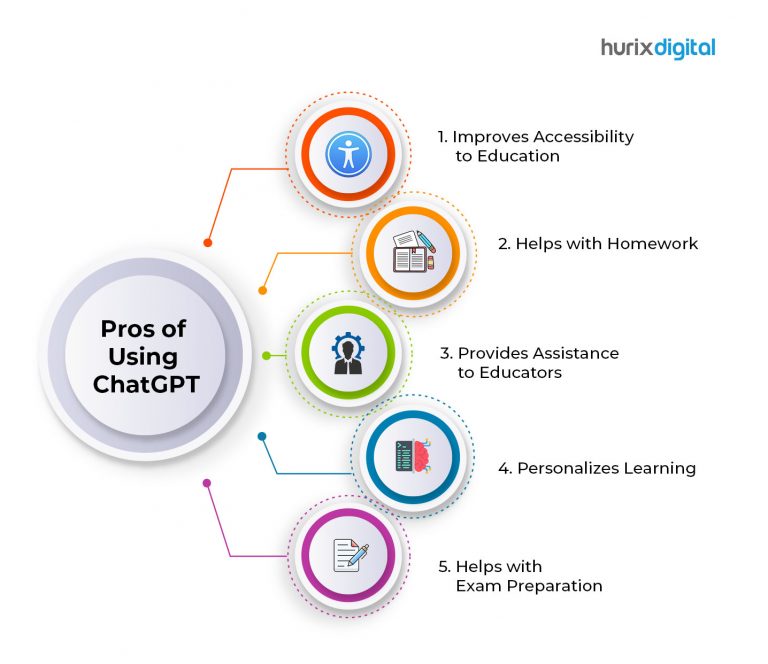

Summary
This blog post explore all the nuances of ChatGPT, an AI tool, in the field of education. It highlights the key advantages and the disadvantages this tool comes with for teachers and students alike.
The use of AI is increasing rapidly in the education sector. It’s no wonder then that ChatGPT, a chatbot developed by OpenAI in November 2022, has gained global popularity, with the highest percentage of users (15.22%) residing in the United States.
Owing to its popularity and capability to generate human-like responses to questions, ChatGPT is becoming a trusted companion to many learners and educators. However, like any nascent technology, ChatGPT in higher education has its share of challenges.
What are the Pros of Using ChatGPT?

1. Improves Accessibility to Education
ChatGPT improves the accessibility to education by removing barriers for people with disabilities and non-English speakers.
For instance, ChatGPT can speak out the responses for students with sight impairments. It can also summarize the topics or concepts from a course for students with learning disabilities. In addition, it enables students who have trouble typing or using a keyboard to speak out their queries.
Besides this, ChatGPT can translate English content for students into a language they are comfortable with, thus enabling them to understand their course material easily.
2. Helps with Homework
In a traditional scenario, students typically scour their textbooks and the internet for relevant assignment material. Unlike this, ChatGPT saves time and makes completing assignments easier.
When students type questions for an assignment on ChatGPT, the latter responds with explanations and examples. It provides students with an alternative way of answering assignment questions. It also offers academic phrases, terms, and sentence structures relevant to a particular context and, as a result, enriches students’ academic vocabulary and writing skills.
3. Provides Assistance to Educators
Using ChatGPT in higher education can assist professors in multiple ways, as follows:
- It can develop a comprehensive lesson plan for a course.
- It can generate a variety of questions like MCQs, true and false, fill in the blanks, etc., for a class test or quiz.
- It can analyze students’ assignments and aid teachers in grading and providing constructive feedback.
- It can provide access to links containing additional educational resources for a course.
- It can offer tips and tricks for increasing students’ engagement and reducing troublesome behavior in the classroom.

4. Personalizes Learning
ChatGPT can understand students’ learning styles, providing a personalized learning experience. It can analyze students’ academic performance and structure the course to meet their requirements.
Through Chat GPT, students can learn at a comfortable pace and thoroughly understand complex concepts. They can quickly access additional educational content by uniquely interacting with text-based research or learning material through ChatGPT.
Apart from this, they can improve the quality of their academic essays with the help of individualized and personalized feedback from ChatGPT.
5. Helps with Exam Preparation
When exams are around the corner, ChatGPT can help students prepare. It can recapitulate their class notes with emphasis on key terms. It can help them form an ideal answer to an important question. In addition, it can generate practice questions to help students become aware of their strengths and weaknesses based on subject matter.





